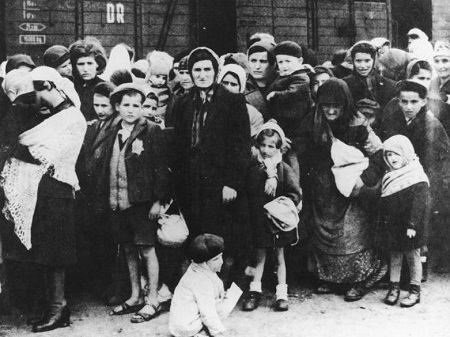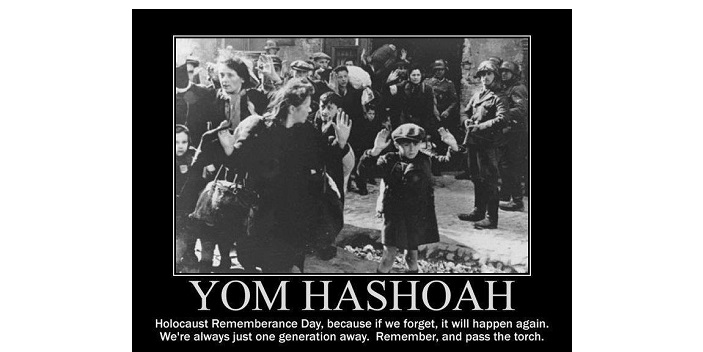 The Holocaust was a time of devastation, hate and corruption and is considered one of the most terrible events in human history.
The Holocaust was a time of devastation, hate and corruption and is considered one of the most terrible events in human history.
While the horror and mass extermination of more than six million Jews is known as fact around the world, it is more than just history to Arthur Weisze— it is his most vivid and harrowing memory.
“The most appropriate tribute that we can pay to the victims of the Holocaust is to never let the world forget that it happened,” says Danna Horwood, Executive Director at Margaret’s Legacy. “Education is a vital tool to ensure it is not forgotten and to remind generations why we cannot allow history to repeat itself.”
Margaret’s Legacy is an umbrella agency that seeks to provide Holocaust education through tools such as the documentary ‘Margaret and Arthur’s Story’. This thirty-five minute film chronicles Margaret and Arthur Weiszes’ experiences during WWII, their escape from Hungary to Canada and their new life in Hamilton, Ontario—told through the eyes of Arthur and Weisz’s descendants.
In an effort to give younger audiences a better understanding of what happened during the Holocaust and its lingering effects, the documentary addresses the themes of courage, survival and love, and educates youth about the need for tolerance and kindness in the world.

“As we approach Yom HaShoah, Holocaust Remembrance Day, [Full name is Yom Hashoah Ve-Hagevurah CP] it is important to listen to the stories of those who lived and experienced this tragic time,” adds Danna. “It will become harder as time goes by, to learn from first-hand experiences and to truly feel the impact that the Holocaust had on six-million Jews and their families.”
Danna Horwood and her youngest daughter Jamie Rose (both descendants of Margaret and Arthur Weisz) will present to community members at the Hamilton Hebrew Academy on May 5th. Margaret and Arthur’s Story’ will also be screened. For the Silo, Lauren Dam
For more information, please visit http://www.margaretslegacy.com/site/home.
About Margaret’s Legacy:
Margaret’s Legacy is an umbrella agency that seeks to provide holocaust education through tools such as the documentary ‘Margaret and Arthur’s Story’. Using their harrowing, yet inspirational story as a backdrop, Margaret and Arthur’s Story is a documentary produced specifically for young viewers to educate them about the Holocaust, its impact and why we cannot allow history to repeat itself.
Supplemental- How the Holocaust rocked RUSH front man Geddy Lee

Canadian Muscle: The Last Hundred Days of WWI
During the Great War, Canada earned a reputation as an effective fighting force at Vimy Ridge and Passchendaele. Less known is the important role our soldiers played in the final victory during “Canada’s Hundred Days”—the three-month stretch culminating in Armistice.
Allied generals put Canadians on the front lines. Canadian soldiers had gained such a reputation that their mere appearance on the battlefield was a signal to Germans that attack was imminent.
Early 1918, was not favourable to the Allied cause. However, German ranks were running thin with respect to both soldiers and equipment. As well, America had entered the war by 1917.
The Battle of Amiens in August 1918 launched the Hundred Days offensive. Led by Canadian and Australian troops, the offensive moved 20 kilometres in three days. Instead of the typical preliminary artillery bombardment before an engagement – which also tipped the enemy an attack was coming – the soldiers advanced by surprise. The result put a huge dent in German morale referred to as “the black day of the German army” by German command.
Canadian Lieutenant-General Sir Arthur Currie then came up with a daring plan to crack the Hindenburg Line. Currie and his Canadians, with a British division, attacked at Canal du Nord. They had to cross at a 2.5-kilometre-wide dry section of the canal, which left them susceptible to attack. Knowing his men would be easy targets, Currie planned what would become the war’s largest single-day of bombardment. His plan succeeded.
As the Germans retreated, fighting continued. During heavy fighting, Canadians aided in the capture of Cambrai. By October 11, the Canadian Corps gained control of Canal de la Sensee. At this point, the Canadian Corps ceased to operate as one unit, but the individual divisions continued. The final battle was Valenciennes – October 31 to November 2 – and on November 11, Canadian soldiers took part in the capture of Mons.
The significance of the capture of Mons was highlighted in this year’s November/December issue of Legion Magazine. The article recalls that on August 23, 1914, Mons was the first city where Britain and Germany battled. And after one day of intense fighting, the German Army took the city and forced the British Expeditionary Force into a grueling retreat toward Paris. For four years and three months, Mons was in German hands until November 11, 1918, when Canadians, the colonials, liberated it.
When Armistice was signed on November 11, 1918, it was also the end of the Hundred Days for Canada. During that time, more than 100,000 Canadian soldiers advanced 130 kilometres. Along the way, they took 32,000 prisoners and captured artillery, machine guns and mortars. But, victory came with a price—6,800 Canadians died and 39,000 were wounded.
One year after the war, King George V initiated the two minutes of silence throughout the British Empire at 11 a.m. on November 11. Canadian Parliament declared Armistice Day.
Two years later, at the request of veterans, it was changed to Remembrance Day. In 1997, Ontario’s Legislature passed the Remembrance Day Observance Act. This bill, introduced by MPP Morley Kells, promotes two minutes of silence at the 11th hour of the 11th day of the 11th month in remembrance of those who gave their lives for all of us. In addition, on the initiative of MPP Jim Wilson, we also observe Remembrance Week.
Toby Barrett MPP for Haldimand-Norfolk